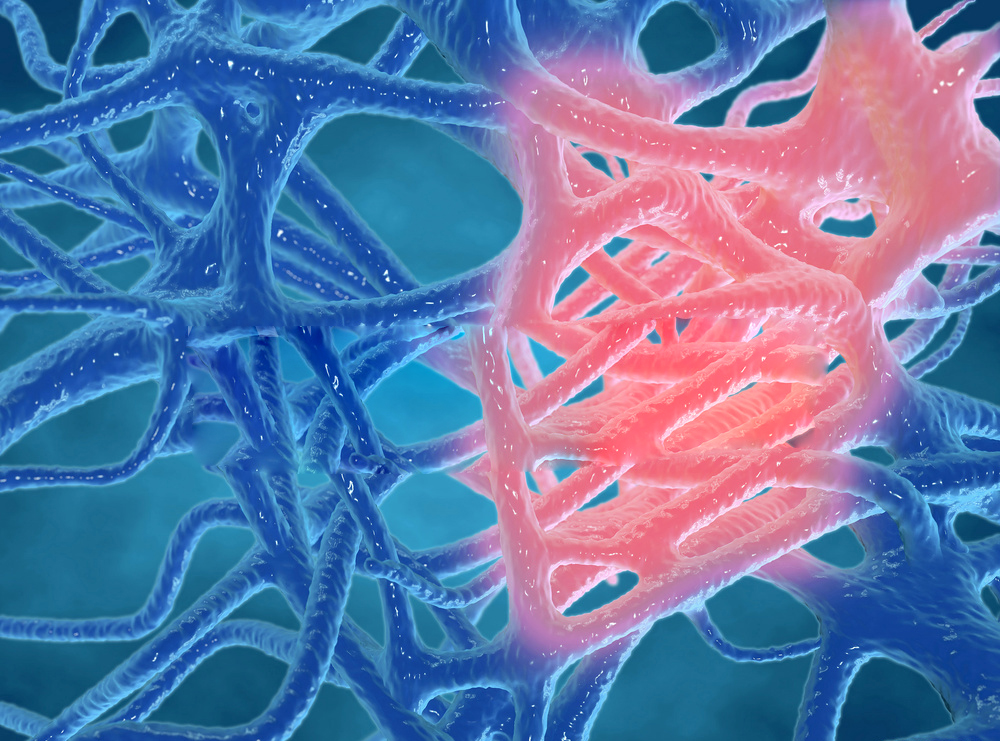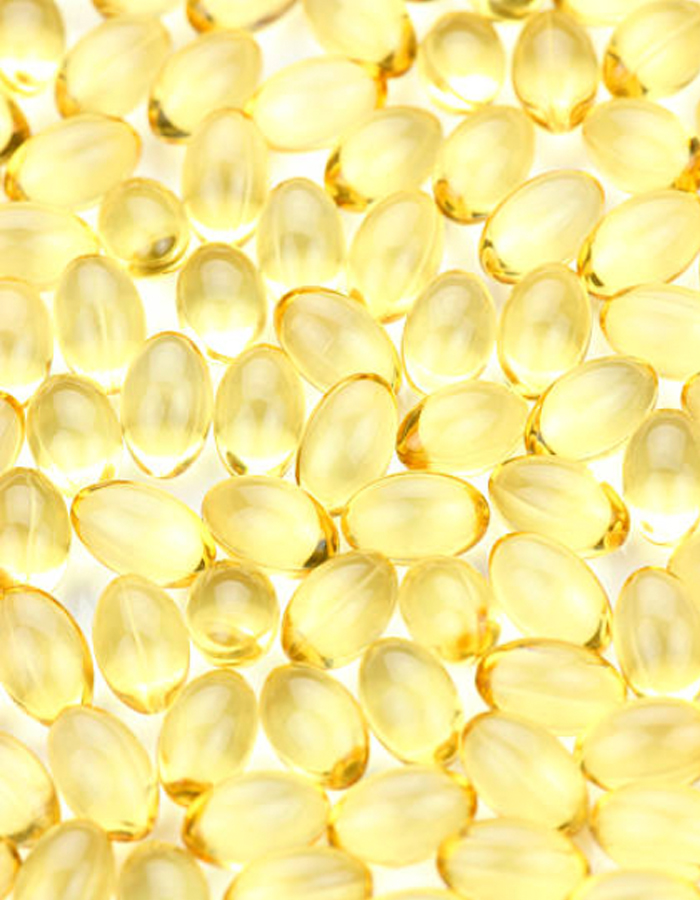ANTI-INFLAMMATORY ROLE OF OMEGA-3S
How can omega-3 play a role
The omega-3 fatty acids EPA and DHA have well known roles as anti-inflammatory agents through a number of mechanisms. Metabolism of omega-3 and omega-6 fatty acids use the same enzyme systems and changes in the ratio leads to domination of one system over the other. Omega-6 fatty acids lead to production of arachidonic acid and inflammatory products via the action of cyclo-oxygenase. We have all had the benefit of inhibiting cyclo-oxygenase (Cox) when we take aspirin to reduce pain and swelling. The Western diet is unfortunately rich in omega-6, tipping the ratio to an unwanted high omega-6:omega-3 ratio. Fortunately, intake of omega-3 by diet or supplementation can counter-act this misbalance. This is important as increasing the omega-3 in a cell reduces the ability of COX to convert arachidonic acid to inflammatory mediators (prostaglandins and thromboxane).
Omega-3 fatty acids are also precursors of resolvins, maresins and protectins, collectively known as specialised pro-resolving mediators (SPMs). These molecules act to resolve inflammation and repair and restore tissue back to its original state.
SPMs inhibit the production of inflammatory cytokines and reduce immune cell activity, in particular, they inhibit neutrophil migration and entry into the inflammatory site. SPMs promote phagocytosis of apoptotic cells by macrophages, meaning they promote macrophages to clean up the mess after inflammation by eating the remaining dead cells. SPMs also promote the death of cells that have decided to actively die due to excessive damage, a process known as apoptosis, and in this way clean the site of debris.
Evidence from studies mostly performed in children show that omega-3 supplementation improves the outcome of patients with respiratory infections and lung injury and acute respiratory distress (Pecora).
Inhibition of vial entry and replication
Whilst most focus of omega-3 activity is on the anti-inflammatory actions, there is also evidence that they may also inhibit viral entry and replication. The ACE2 protein is part of lipid membrane rafts; as the name implies, these are areas within the cell membrane where proteins, cholesterols and other specific lipids come together as clusters to enable efficient cell signalling. EPA and DHA fatty acids incorporated into the cell membrane (as part of phospholipids) regulate membrane fluidity and disturb assembly of rafts and impact cell membrane signalling. In this manner, omega-3 fatty acids reduce the inflammatory activity of CD4+ T-cells (Hou).
EPA and DHA also have actions on a number of receptors involved in inflammation. Omega-3 fatty acids bind PPAR which have anti-inflammatory activity and has been proposed as a target for inhibiting the cytokine storm in COVID patients (Ciaverella). A complex interplay between lipotoxicity, nuclear receptors regulating lipid biosynthesis and COVID mortality and morbidity is beginning to be described. Omega-3 fatty acids may have a role in reducing toxicity through interaction with nuclear receptors that regulate de-novo lipogenesis (Weill). Like much of research in COVID, this is an area of growth and discovery.
Omega-3 as a prophylactic
As stated above the anti-inflammatory activity of omega-3 may help to reduce the pathological outcome of infection, and modification of signalling molecules may prevent the virus from entering the body and replicating. There is therefore a suggestion that omega-3 can act prophylactically against SAR-CoV-2 infection. Initial top-level results from a 250,000 volunteer epidemiological study run in Norway (Koronastudie) shows that those consuming omega-3 have lower infection rates than those not taking supplemental omega-3. This hypothesis is now being tested in an 80,000 volunteer clinical trial (Transtudie).
Epax oils in COVID
The COVID pandemic is at its worst in elderly patients and those with underlying health conditions (CDC). Some of these conditions can be improved with omega-3 supplementation, notably:
- Hypertension (high blood pressure)
- Diabetes
- Liver disease
In the fight against COVID, omega-3 can help in two main ways. Our general health is a vital factor in our ability to cope with physical stress. Our ability to fight viral infections is increased when we have good general health and a well-functioning immune system (Calder 2020). Omega-3 contributes to general health through recognised actions on heart health and blood lipid health.
Secondly, omega-3 fatty acids have an important anti-inflammatory and inflammatory resolving activity. Inflammation causes life threatening lung damage with COVID and omega-3 supplementation has been proposed as a potential agent for helping in the treatment of COVID symptoms (Szabo, Weill). The anti-inflammatory action of omega-3 is dose dependent and the more EPA and DHA in the cell membrane, the better the anti-inflammatory activity is likely to be. High concentrations of EPA and DHA are therefore more likely to have beneficial outcomes than low concentrates (Khoramipour).
The anti-inflammatory action of EPA and DHA is well known and current regulations in Europe recommend at least 250mg per day in normal healthy individuals. In the knowledge that the anti-inflammatory effect of EPA and DHA is dose dependent (Calder 2010) and that COVID infection can elicit a deadly inflammatory response, intake of a high concentrate omega-3 has been suggested as an easy, safe, preventive action against COVID-19 (Szabo, Weill, Khoramipour, Calder 2020).
References
Calder PC. Omega-3 fatty acids and inflammatory processes. Nutrients. 2010 Mar;2(3):355-74.
Calder PC, 2020.Carr AC, Gombart AF, Eggersdorfer M. Optimal Nutritional Status for a Well-Functioning Immune System Is an Important Factor to Protect against Viral Infections. Nutrients. 2020 Apr 23;12(4):1181.
CDC: https://www.cdc.gov/coronavirus/2019-ncov/need-extra-precautions/people-with-medical-conditions.html#:~:text=Hypertension%20or%20high%20blood%20pressure,Liver%20disease
de la Rica R, Borges M, Gonzalez-Freire M. COVID-19: In the Eye of the Cytokine Storm. Front Immunol. 2020
Ciavarella C, Motta I, Valente S, Pasquinelli G. Pharmacological (or Synthetic) and Nutritional Agonists of PPAR-γ as Candidates for Cytokine Storm Modulation in COVID-19 Disease. Molecules. 2020 Apr 29;25(9):2076
Hou TY, McMurray DN, Chapkin RS. Omega-3 fatty acids, lipid rafts, and T cell signaling. Eur J Pharmacol. 2016 Aug 15;785:2-9.
Khoramipour K, Basereh A, Hekmatikar AA, Castell L, Ruhee RT, Suzuki K. Physical activity and nutrition guidelines to help with the fight against COVID-19. J Sports Sci. 2020 Aug 25:1-7.
Koronastudie: https://clinicaltrials.gov/ct2/show/NCT04320732?term=NCT04320732&draw=2&rank=1
Transtudie: https://clinicaltrials.gov/ct2/show/NCT04609423?term=NCT04609423&draw=2&rank=1
Pecora F, Persico F, Argentiero A, Neglia C, Esposito S. The Role of Micronutrients in Support of the Immune Response against Viral Infections. Nutrients. 2020 Oct 20;12(10):3198.
Szabó Z, Marosvölgyi T, Szabó É, Bai P, Figler M, Verzár Z. The Potential Beneficial Effect of EPA and DHA Supplementation Managing Cytokine Storm in Coronavirus Disease. Front Physiol. 2020 Jun 19;11:752.
Weill P, Plissonneau C, Legrand P, Rioux V, Thibault R. May omega-3 fatty acid dietary supplementation help reduce severe complications in Covid-19 patients? Biochimie. 2020 Sep 10:S0300-9084(20)30209-1.
This post is also available in: French





